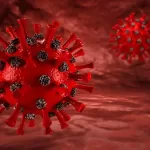
Understanding Neurodevelopmental Disorders: Insights from Parental Traits
February 8, 2024In a pioneering study led by researchers at Penn State, a novel approach to predicting the trajectory of neurodevelopmental disorders has emerged, shedding light on the crucial role parental traits play in shaping the manifestation and severity of these conditions in children. Published in the American Journal of Human Genetics, the research underscores the significance of evaluating both genetic and phenotypic factors within families to enhance our understanding of complex disorders like autism, schizophrenia, depression, and anxiety.
Conventional methods of predicting the onset and severity of neurodevelopmental disorders have often relied solely on genetic screening, overlooking the intricate interplay between genetic predisposition and environmental influences. However, this latest study challenges the status quo by emphasizing the importance of assessing parental traits as a critical determinant of disease risk and severity in children.
Led by Santhosh Girirajan, the study analyzed data from over 97,000 families, including those with children diagnosed with neurodevelopmental disorders such as autism and intellectual disability. By examining both genetic information and questionnaire data from parents and children, the researchers uncovered compelling insights into the familial transmission and expression of these disorders.
One key finding of the study is the prevalence of neurodevelopmental disorders in children whose parents exhibit similar traits, particularly in cases where both parents report manifestations of psychiatric conditions like anxiety or depression. This observation suggests a phenomenon of assortative mating, wherein individuals with similar phenotypic traits are more likely to select each other as partners, inadvertently increasing the risk of passing on genetic predispositions to their offspring.
Furthermore, the study elucidates the complex genetic underpinnings of neurodevelopmental disorders, highlighting the multi-hit model wherein the disease results from the interaction of multiple genetic mutations inherited from both parents. By considering the cumulative effect of these mutations and their interplay during development, the researchers provide valuable insights into the nuanced etiology of these conditions.
The implications of this research extend beyond academia, with potential applications in genetic counseling and the development of personalized therapeutic interventions for affected children. By incorporating parental traits into predictive models, clinicians can enhance the accuracy of disease prognosis and tailor intervention strategies to address the specific needs of individual patients.
As Girirajan emphasizes, “Understanding how both parents contribute to their child’s diagnosis could inform genetic counseling and the development of therapeutic intervention plans for children impacted by these disorders.” With this groundbreaking research paving the way for a more holistic approach to neurodevelopmental disorders, there is renewed hope for improved diagnosis, treatment, and support for affected individuals and their families.
More information: Corrine Smolen et al, Assortative mating and parental genetic relatedness contribute to the pathogenicity of variably expressive variants, The American Journal of Human Genetics (2023). DOI: 10.1016/j.ajhg.2023.10.015


















